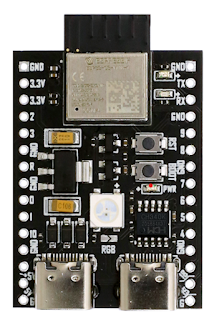Testing the ESP32-C3 ...
Having used the ESP32 using both Arduino IDE and MicroPython, I have been quite happy with it. However, I have found MicroPython more stable and powerful, especially if multithreading is needed. Do not get me wrong, you can get multiple tasks in FreeRT too, but it gets tricky quickly.
ESP32 features a dual-core 240 MHz Xtensa 32-bit processor, but the ESP32-C3 changes that to a single-core 160 MHz RISC-V processor. They both keep the handy Wifi and Bluetooth interfaces and a nice collection of built-in peripherals and communication interfaces (SPI, I2C, I2S).
What I did not know was the new architecture was also supported by Micropython, which was a nice surprise. So I went on and bought one of them to give it a go.
The system feels a bit less powerful than its dual-core sibling but it works nicely with Micropython nonetheless. Having fewer I/O pins available can be a problem for certain applications but I definitely recommend this device if you need a wifi-enabled microcontroller within a budget. I have not studied the datasheet regarding its consumption figures but I would expect it to require less power than its more powerful counterpart.




Comments